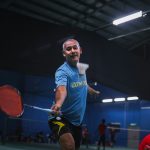Cheerleading involves more than just pom-poms and chants; it’s a strenuous sport requiring high-level athleticism. Cheerleaders are athletes who must master a diverse set of skills, including tumbling, stunts, and jumps. The high-flying tricks and acrobatic feats demand a combination of strength, flexibility, and, most importantly, dynamic stability. Without the latter, cheerleaders risk serious injuries, which can sideline them for an entire season or even permanently. This article will explore how athletes in competitive cheerleading can improve their dynamic stability for stunts, ensuring that they continue to excel in this physically demanding sport.
The Importance of Dynamic Stability in Cheerleading
Dynamic stability is more than just a fitness buzzword in cheerleading. It’s a crucial element of performing high-stakes stunts and tumbling exercises. Understanding its importance aids in developing better training regimens, reducing the risk of injury, and enhancing overall performance.
Lire également : What specific endurance exercises are essential for competitive speed skaters?
Dynamic stability refers to the ability to remain balanced while in motion or when force is applied. For cheerleaders, this often means maintaining a steady position while being lifted or tossed in the air (as a flyer) or providing a stable base for other cheerleaders to perform their stunts (as bases).
Without adequate dynamic stability, cheerleaders are more prone to falls, accidents, and, consequently, injuries. In a sport as competitive and physically demanding as cheerleading, these risks aren’t just hypothetical. A study by the American Academy of Pediatrics found that cheerleading accounts for 65% of all catastrophic injuries in high school girl’s sports.
A lire aussi : What are the best strategies for shuttlecock control in windy conditions for badminton players?
Incorporating Balance and Strength Training
Addressing dynamic stability begins in the weight room with balance and strength training. Balance exercises enhance proprioception, the body’s awareness of its position in space, while strength training builds the necessary muscle to resist force and maintain position during stunts.
Balance training should focus on both static and dynamic exercises. Static balance exercises, like standing on one leg or balance board exercises, help improve base-level stability. Dynamic balance exercises, like single-leg squats or lunges, mirror the movements cheerleaders make during their routines and allow them to practice maintaining stability while in motion.
Strength training is equally vital for improving dynamic stability. Lower body strength is particularly crucial for bases, who must lift and support flyers. Squats, lunges, and deadlifts should be staples of their strength training regimen. Flyers, on the other hand, benefit from core and upper body strength to maintain their position in the air and perform twists. Planks, push-ups, and pull-ups can help flyers build the requisite strength.
Incorporating Flexibility Training
Flexibility is another essential aspect of dynamic stability in cheerleading. A more flexible athlete can better absorb the impact of a landing or sudden movement, reducing their risk of injury.
Flexibility training for cheerleaders should be both static and dynamic. Static stretching, where athletes hold a stretch for a set amount of time, can increase overall flexibility and range of motion. These stretches should be performed after workouts or practice to aid in recovery and muscle lengthening.
Dynamic stretching, on the other hand, should be incorporated into warm-ups. These stretches, which involve movement, can help cheerleaders prepare their muscles for the intense activity to come. They also mimic the range of motion required in cheerleading, enhancing performance during stunts and tumbling exercises.
Implementing Sport-Specific Drills
While general strength, balance, and flexibility exercises lay the foundation for dynamic stability, sport-specific drills can help cheerleaders apply these skills to their routines. These drills should mimic the movements and challenges cheerleaders face during their stunts and tumbling exercises.
For bases, this might mean practicing lifting and catching drills with varying weights to simulate different flyers. They may also work on their footwork and positioning to maintain stability while moving to catch a flyer.
Flyers, on the other hand, can benefit from drills that simulate their aerial movements. This might include gymnastics exercises that practice flips and spins, or balance beam workouts to enhance their balance while off the ground.
Monitoring Training and Recovery to Prevent Injuries
Lastly, monitoring training loads and ensuring adequate recovery is critical for cheerleaders. Overtraining can lead to fatigue and decreased performance, which can increase the risk of injuries.
Cheerleaders should regularly assess their fatigue levels and adjust their training accordingly. This might mean decreasing the intensity or volume of training during periods of high fatigue or incorporating more rest and recovery days into their training schedule.
Recovery strategies should also be a fundamental part of a cheerleader’s routine. This includes proper nutrition to fuel training and recovery, adequate sleep to allow the body to repair and strengthen, and active recovery methods like light cardio, stretching, or foam rolling to enhance blood flow and flexibility.
In a sport as demanding as cheerleading, dynamic stability isn’t just a performance enhancer – it’s a necessity. By incorporating balance and strength training, flexibility exercises, sport-specific drills, and monitoring training and recovery, cheerleaders can improve their dynamic stability for stunts, reduce their risk of injury, and continue to push the limits of this exhilarating sport.
The Role of Sports Medicine and Physical Therapy
In the world of competitive cheerleading, sports medicine and physical therapy play a crucial role in improving dynamic stability and helping athletes rebound from injuries. A sports medicine specialist can devise a suitable training plan with an emphasis on injury prevention, factoring in the athlete’s age, fitness level, and cheerleading position.
Physical therapy, on the other hand, comes into play when a cheerleader is recovering from an injury. A qualified physical therapist can teach athletes rehabilitative exercises, ensuring they regain strength and range of motion before returning to the sport. Physical therapy is not only key to recovery, but it also plays a preventive role by correcting any biomechanical imbalances that could lead to future injuries.
An example would be stress fractures, a common injury in cheerleading due to excessive jumping and landing. A physical therapist can help athletes build bone strength, improve landing mechanics, and incorporate effective rest periods to prevent these injuries.
Sport-specific fitness assessments can also identify areas that need improvement. These assessments typically include tests for strength, flexibility, aerobic capacity, and balance. For cheerleaders, these tests can provide valuable insights about their physical condition and help tailor their training programs to improve their dynamic stability.
The sports medicine team can also educate cheerleaders on preventive strategies such as proper nutrition, adequate hydration, and the importance of rest. Overall, the collaboration of these professionals with the athletes and their teammates contributes significantly to the enhancement of dynamic stability in cheerleading.
Conclusion: The Path to Stellar Performance and Safety
The dynamic stability that cheerleaders require to perform stunts safely and successfully aligns with strength, flexibility, and balance. From strength training exercises that develop powerful bases and flexible flyers to static and dynamic stretching that enhances range of motion, each aspect of training has a key role in building dynamic stability.
Sport-specific drills allow cheerleaders to hone these skills in a way that directly translates to their performances, while the role of sports medicine and physical therapy ensures that training regimens are followed correctly and cheerleading injuries are effectively managed.
Moreover, the monitoring of training loads, coupled with necessary recovery periods, ensures that cheerleaders don’t risk injury due to overtraining or fatigue. Full custom training programs should also include nutrition plans to fuel the body for optimal performance, and sleep hygiene practices to allow for recovery and the strengthening of the physical condition.
However, it’s essential for cheerleaders, coaches, and parents to remember that dynamic stability isn’t developed overnight. It requires consistent, dedicated effort in training, as well as the willingness to listen to one’s body and rest when necessary. With the right strategies and support, athletes in competitive cheerleading can significantly improve their dynamic stability for stunts, thus elevating their performance, reducing risk injury, and continuing to contribute to the thrilling evolution of one of the most demanding sports in the world.






